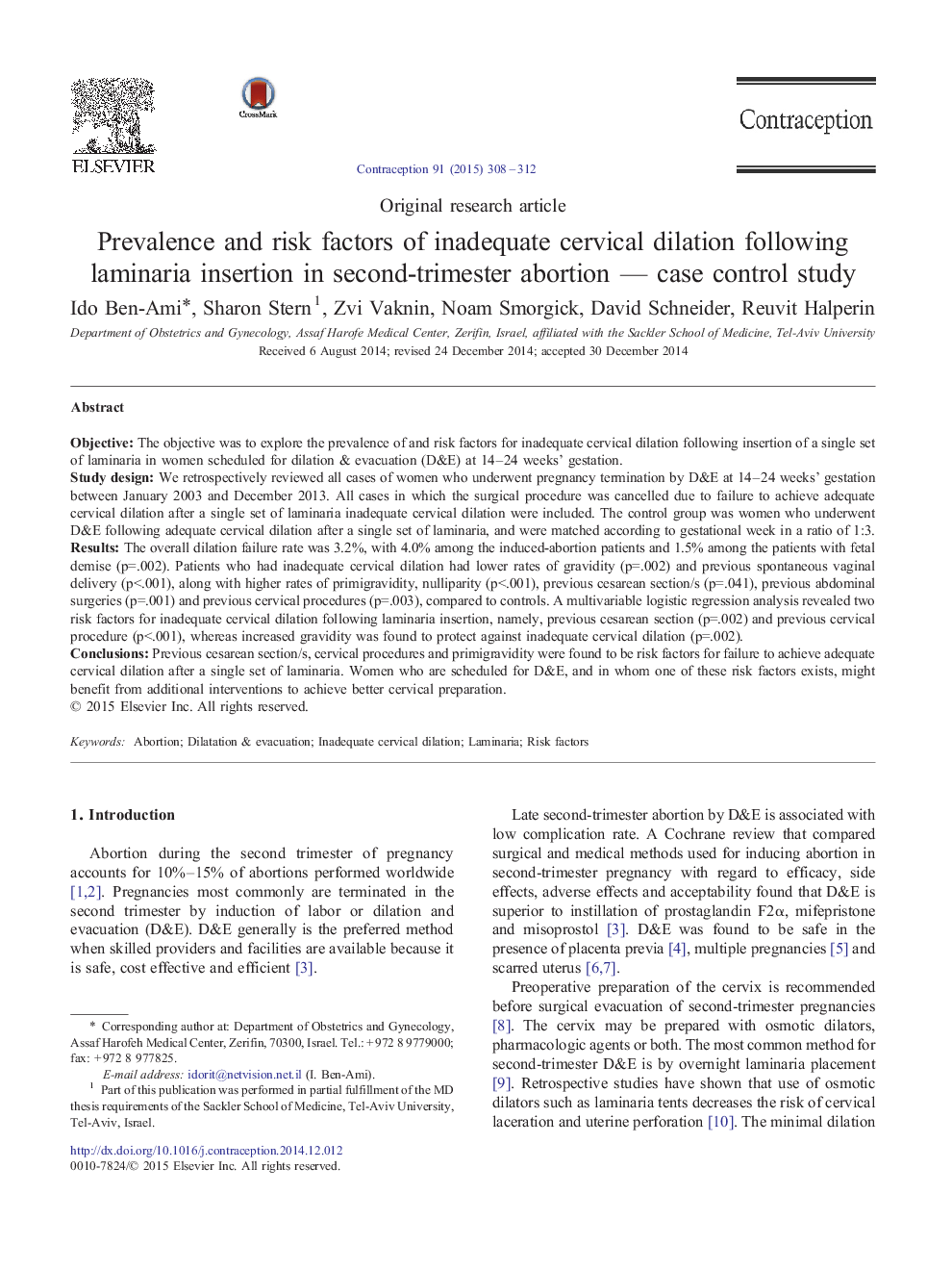| کد مقاله | کد نشریه | سال انتشار | مقاله انگلیسی | نسخه تمام متن |
|---|---|---|---|---|
| 6170711 | 1251414 | 2015 | 5 صفحه PDF | دانلود رایگان |
ObjectiveThe objective was to explore the prevalence of and risk factors for inadequate cervical dilation following insertion of a single set of laminaria in women scheduled for dilation & evacuation (D&E) at 14-24 weeks' gestation.Study designWe retrospectively reviewed all cases of women who underwent pregnancy termination by D&E at 14-24 weeks' gestation between January 2003 and December 2013. All cases in which the surgical procedure was cancelled due to failure to achieve adequate cervical dilation after a single set of laminaria inadequate cervical dilation were included. The control group was women who underwent D&E following adequate cervical dilation after a single set of laminaria, and were matched according to gestational week in a ratio of 1:3.ResultsThe overall dilation failure rate was 3.2%, with 4.0% among the induced-abortion patients and 1.5% among the patients with fetal demise (p=.002). Patients who had inadequate cervical dilation had lower rates of gravidity (p=.002) and previous spontaneous vaginal delivery (p<.001), along with higher rates of primigravidity, nulliparity (p<.001), previous cesarean section/s (p=.041), previous abdominal surgeries (p=.001) and previous cervical procedures (p=.003), compared to controls. A multivariable logistic regression analysis revealed two risk factors for inadequate cervical dilation following laminaria insertion, namely, previous cesarean section (p=.002) and previous cervical procedure (p<.001), whereas increased gravidity was found to protect against inadequate cervical dilation (p=.002).ConclusionsPrevious cesarean section/s, cervical procedures and primigravidity were found to be risk factors for failure to achieve adequate cervical dilation after a single set of laminaria. Women who are scheduled for D&E, and in whom one of these risk factors exists, might benefit from additional interventions to achieve better cervical preparation.
Journal: Contraception - Volume 91, Issue 4, April 2015, Pages 308-312
